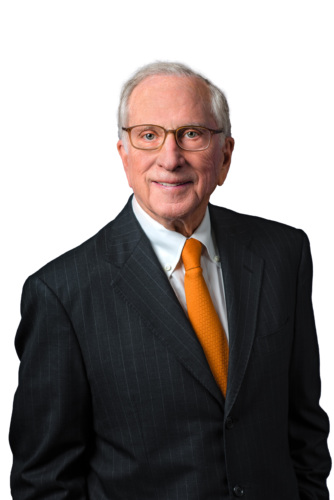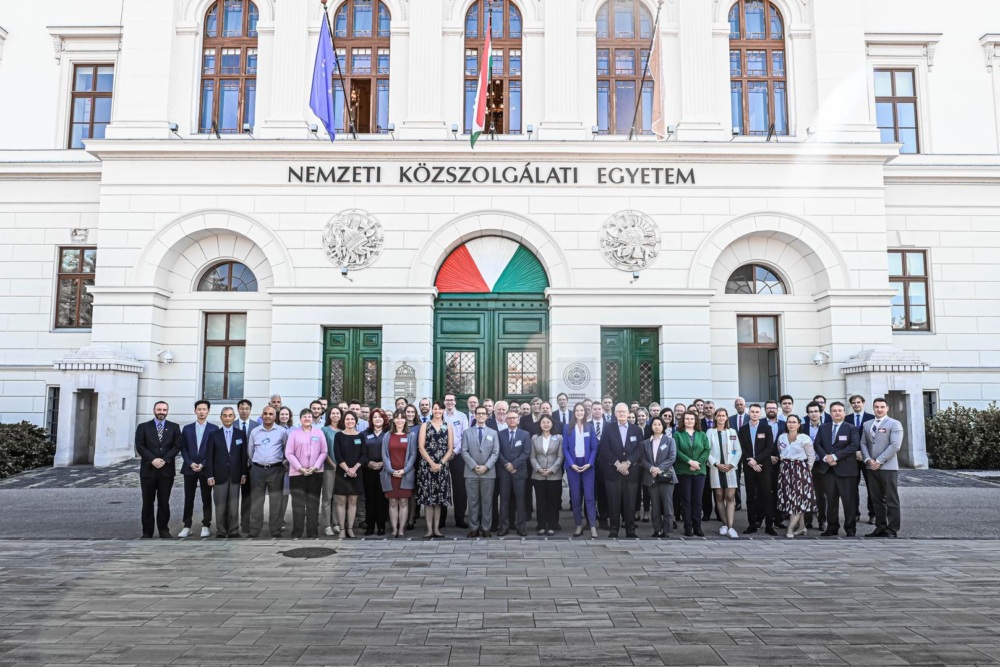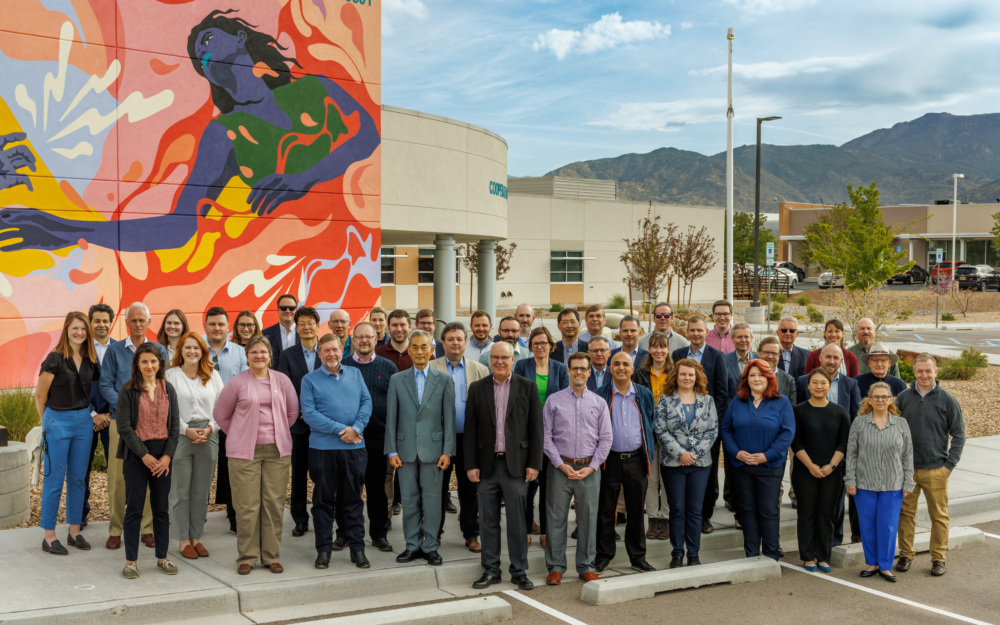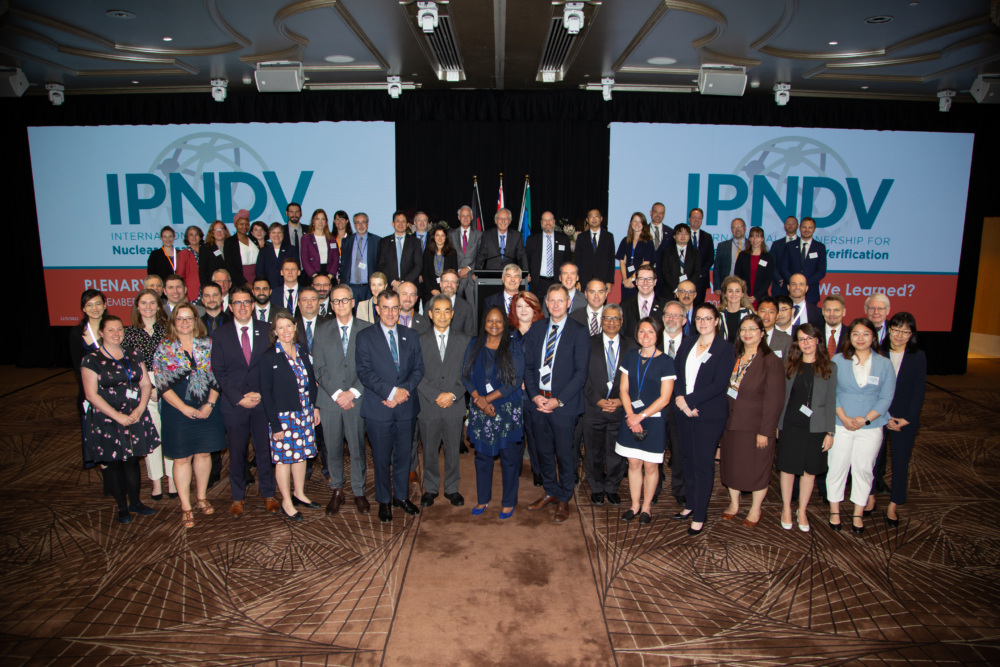
Sam Nunn
Co-Founder and Co-Chair, NTI
Former Senator Sam Nunn Co-Chairman of the Nuclear Threat Initiative “The Mountaintop: A World Free of Nuclear Weapons” International Conference on Nuclear Disarmament Oslo, Norway
Thank you, Kåre, for that generous introduction. We appreciate the extraordinary job you have done in organizing this conference. Your government of Norway is a global leader in ideas and actions to reduce nuclear dangers and to better mankind, and I am honored to be here as a part of this meeting. Over the past two days, you have given those of us here from America the chance to hear important views from around the world. Listening is not always what America does best, so I view this as a great opportunity, to both listen and learn from all of you.
My first trip to Oslo was 46 years ago — October 1962 – at the height of the Cuban Missile Crisis. I was a 24-year-old lawyer with the House Armed Services Committee on an Air Force Trip to NATO.
Several strategic decisions were made while I was on this trip. President Kennedy imposed a naval blockade. To the world’s great relief, Premier Khrushchev ordered all Soviet missiles removed from Cuba. I made three strategic decisions of my own. First, after detailed day-to-day classified briefings on the crisis for ten days, I recognized how close the world was to nuclear war and made my own decision to try to reduce the dangers if I ever had the chance. Second, with three girlfriends in the United States, I bought three wonderful Norwegian ski sweaters. My third decision: after I met an impressive American girl on my next stop in Paris, I decided to give her the most beautiful sweater. It worked – slowly – three years later she became my wife. It is fair to say that the events and decisions that unfolded on my trip to Norway had a profound effect on my professional and personal life.
I. The Nuclear Age – The First 60 Years
At the dawn of the nuclear age — after the devastation of Hiroshima and Nagasaki– General Omar Bradley said in a speech:
“The world has achieved brilliance without wisdom. Ours is a world of nuclear giants and ethical infants. We know more about war than we know about peace, more about killing than we know about living.”
It might surprise General Bradley, if he were alive today, to know that we have made it 60 years without a nuclear attack. Thousands of men and women thought deeply and worked diligently on both sides of the Iron Curtain to prevent nuclear war, to avoid overreacting to false warnings and to provide safety mechanisms and joint understanding to reduce risk.
We were good, we were diligent, but we were also very lucky. We had more than a few close calls, including: the Cuban Missile Crisis of 1962; the 1979 scare when a technician at Omaha accidentally loaded a simulated attack into our warning system; the 1983 Soviet warning glitch which falsely showed five nuclear missiles launched against it by the United States; the 1995 peaceful rocket launch from Norway that Russian early warning systems initially misinterpreted and set in motion Russian procedures for a nuclear response. India and Pakistan have already had more than one close call – and their nuclear age has just begun.
The United States is not immune to mistakes: the world recently learned that on August 29-30, 2007, six cruise missiles armed with nuclear warheads were unknowingly and mistakenly loaded from storage and put onto an Air Force plane. The weapons were flown across the country and unloaded, and for 36 hours, no one knew where the warheads were or even that they were missing from storage.
II. The Nuclear Age Today – The Tipping Point
Making it through 60 years without a nuclear attack should not make us complacent. If we’re to avoid a catastrophe, all nuclear powers will have to be highly capable, careful, competent, rational, and lucky – every single time.
We do have important efforts underway and some important successes, including the Nunn-Lugar Cooperative Threat Reduction program, G8 Global Partnership, the Global Threat Reduction Initiative, the Global Initiative to Combat Nuclear Terrorism, the Proliferation Security Initiative and UN Resolution 1540. These all mark progress and potential, but from my perspective, the risk of a nuclear weapon being used today is growing, not receding. The storm clouds are gathering:
The bottom line: the accelerating spread of nuclear weapons, nuclear know-how and nuclear material has brought us to a nuclear tipping point. The world is heading in a very dangerous direction.
III. The Need For a New Direction
The greatest dangers of the Cold War were addressed primarily by confrontation with Moscow. The greatest global threats today — catastrophic terrorism, a rise in the number of nuclear weapons states, increasing danger of mistaken, accidental or unauthorized nuclear launch – can only be prevented in cooperation with Moscow, Beijing and many other capitals.
Both leaders and citizens from around the world must reflect on what is at stake. I believe that we are in a race between cooperation and catastrophe.
IV. The Vision of Ending This Threat to the World
With these growing dangers and stakes in mind, George Shultz, Bill Perry, Henry Kissinger and I published an op-ed in January 2007 in The Wall Street Journal that called for a different direction for our global nuclear policy with both vision and steps.
The four of us, and the many other former security leaders who joined us, are keenly aware that the quest for a nuclear weapons free world is fraught with practical and political challenges. As The Economist magazine wisely said in 2006: “By simply demanding the goal of a world without nuclear weapons without a readiness to tackle the practical problems raised by it ensures that it will never happen.”
We have taken aim at the “practical problems” by laying out a series of steps that we believe constitute the “urgent new actions” for reducing the nuclear dangers and lay the groundwork for building a world free of the nuclear threat.
As Secretary Shultz said yesterday, we need to “wake up” to urgent tasks:
Each step will help reverse the spread of nuclear weapons. Each step will reduce the risk of nuclear use. Each step will inspire greater cooperation. And each step will help build a foundation of cooperation and trust – among the United States, Russia and China, and all nuclear weapons states. Without Russia as a strong security partner in Europe, Asia, and globally, each step will move from difficult to impossible.
V. No Security Without Cooperation; No Cooperation Without Non- Nuclear Vision — The Core Argument
Strategic cooperation must become the cornerstone of our national defense against nuclear weapons. This is not because cooperation gives us a warm feeling of community, but because every other method will fail.
I have concluded that we cannot defend America without taking these steps; we cannot take these steps without the cooperation of other nations; we cannot get the cooperation of other nations without the vision and hope of a world that will someday end these weapons of mass destruction as a threat to the world.
I also believe that this same logic applies to other nations around the world. The use of a nuclear weapon anywhere will affect every nation everywhere.
The vision and actions must go together. Without the bold vision, the actions will not be perceived as fair or urgent. Without the actions, the vision will not be perceived as realistic or possible.
This will be a challenging process that must be accomplished in stages. The United States must keep its nuclear weapons as long as other nations do. But we will be safer, and the world will be safer, if we are working toward the goal of deemphasizing nuclear weapons and keeping them out of dangerous hands — and ultimately ridding our world of them.
The good news is that momentum for action is building. We can see it here in this room at this distinguished meeting hosted by our Norwegian friends with more than 100 participants from 29 countries. We have seen it in the commitment of the government of the United Kingdom. We have seen it in Russia with the constructive words of Foreign Minister Lavrov, former Defense Minister Sergei Ivanov and former Foreign Minister Igor Ivanov. And we are seeing it in America, where 17 of the 24 former Secretaries of Defense and State and National Security Advisors spanning nine Administrations are supporting the vision of a world free from nuclear weapons and the steps needed to move in that direction.
VI. The Vision of a World Without Nuclear Weapons – A Long and Distinguished History
In the 1960s, at an earlier tipping point in the nuclear age, it was the vision of a nuclear weapons free world that pulled us back from the edge. It came in the form of the Nuclear Non-Proliferation Treaty. The Treaty was built on three promises:
The Nonproliferation Treaty – and its vision of a world free of nuclear weapons – has been successful in keeping the number of nuclear weapons states below what almost anyone in the 1960s expected by the turn of the 20th century. But today, the Treaty is in trouble. In the eyes of its critics, the Treaty has served to enshrine the nuclear weapons inequalities that existed the day it was signed. As they see it, those who had nuclear weapons on that day continue to keep them; those who didn’t – tough luck. There can be endless argument about exactly what the Article VI commitment means and the timetable, but it must mean at least this: Nuclear weapons nations must visibly and steadily reduce their reliance on nuclear weapons. Today the world believes they are not – and that belief has a clear and increasingly negative impact on our efforts to prevent the spread and use of nuclear weapons. As IAEA Director ElBaradei has said: “It’s hard to tell people not to smoke when you have a cigarette dangling from your mouth.”
VII. The First Steps in the Ascent
This is not, however, just about setting an example. It is about our own security and survival. We in America should ask ourselves a long overdue question: 17 years after the Cold War, how can it be in the United States’ national security interest for the President of Russia to have only a few minutes to decide whether to fire his nuclear weapons or lose them in response to what could be a false warning? I would hope that this question would be asked in reverse in Russia. I have posed this question to both Presidents Bush and Putin in person over the past few months. It is my hope that the United States and Russia will begin to ask this question together and over time other nuclear nations will join in this exercise in survival.
If together we increase warning time — making nuclear weapons less relevant – and at the same time reduce our numbers of weapons — it will strengthen our fight against the spread of nuclear weapons and nuclear materials.
This is not because our example is likely to inspire Iran, North Korea or al Qaeda to say “we have seen the light,” but because many more nations will be willing to join us in a firm and vigorous approach to stop the proliferation of nuclear weapons and materials and prevent catastrophic terrorism.
VIII. The Mountaintop
The reaction of many people to the vision and steps to eliminate the nuclear threat comes in two parts – on the one hand they say “that would be great.” And their second thought is: “We can never get there.”
To me, the goal of a world free of nuclear weapons is like the top of a very tall mountain. It is tempting and easy to say: “We can’t get there from here.” It is true that today in our troubled world we can’t see the top of the mountain.
But we can see that we are heading down — not up. We can see that we must turn around, that we must take paths leading to higher ground and that we must get others to move with us. We must find trails leading upward.
Once we get to higher ground there will remain serious obstacles between us and the top. We must develop ironclad verification procedures and assurances for monitoring and enforcing a prohibition on nuclear weapons. We must be able to respond quickly and decisively to any attempt to cheat. Today it is very apparent that our capability to detect and respond needs considerable strengthening, including rebuilding the confidence of our allies and friends in the accuracy and objectivity of U.S. intelligence.
Both the good and bad news is that, given the big steps required to move upward, we have time to work on the transition from higher ground to the top. It is not too soon to begin.
IX. A Parable of Hope
Let me close with a parable of hope. After the collapse of the Soviet Union, when the United States began assisting Russia’s work to dismantle Soviet nuclear missiles and warheads, our countries struck a deal called the U.S.–Russian Highly Enriched Uranium Agreement.
Under this agreement, which is celebrating its 15th anniversary this month, 500 tons of highly enriched uranium from former Soviet nuclear weapons is being blended down to low enriched uranium, and then used as fuel for nuclear power plants in the United States. Shipments began in 1995 and will continue through 2013. When you calculate that 20% of all electricity in the U.S. comes from nuclear power plants, and 50% of the nuclear fuel used in the U.S. comes from Russia and Ukraine through the HEU Agreement, you have an interesting fact: roughly speaking – one out of every ten light bulbs in America today is powered by material that was in Soviet nuclear warheads pointed at us a few years ago.
From swords to ploughshares. Who would have thought this possible in the 1950s, 1960s, 1970s, 1980s or even in the early 90s? It would have certainly been seen as a mountain too high to climb.
Nearly 20 years ago, President Reagan asked an audience to imagine that “all of us discovered that we were threatened by a power from outer space—from another planet.” The President then asked: “Wouldn't we come together to fight that particular threat?” After letting that image sink in for a moment, President Reagan came to his point: “We now have a weapon that can destroy the world — why don't we recognize that threat more clearly and then come together with one aim in mind: how safely, sanely, and quickly can we rid the world of this threat to our civilization and our existence.”
If we want our children and grandchildren to ever see the mountaintop, our generation must begin to answer this question.
###
Sign up for our newsletter to get the latest on nuclear and biological threats.
The International Partnership for Nuclear Disarmament Verification (IPNDV) convened its most recent working meeting in Budapest, Hungary from September 4-8, 2023.
The International Partnership for Nuclear Disarmament Verification (IPNDV) convened its most recent working meeting in Albuquerque, New Mexico from April 24-28, 2023, hosted by Sandia National Laboratories.
The International Partnership for Nuclear Disarmament Verification (IPNDV) held its annual plenary meeting in person from December 5-9, 2022, in Sydney, Australia. This meeting of the IPNDV was generously hosted by the Australian Safeguards and Non-Proliferation Office (ASNO).


